Trees Birds Mammals Fish Amphibians Reptiles
Wild Algarve
Bookshop
Hebeloma crustuliniforme (Bull.) Quél. - Poisonpie
Phylum: Basidiomycota - Class: Agaricomycetes - Order: Agaricales - Family: Strophariaceae
Distribution - Taxonomic History - Etymology - Toxicity - Identification - Reference Sources
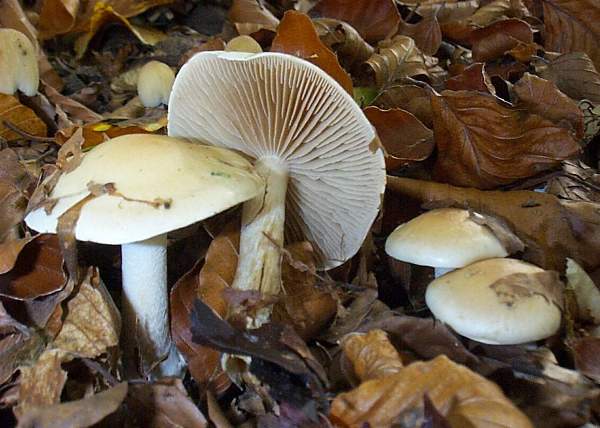
The most infamous of these toxic toadstools, which occasionally forms fairy rings in broadleaf or coniferous woodland, goes by the name of Poisonpie. As for its culinary value, enough said! Whoever thought ‘pie’ was a good name for this mushroom may have mistaken ‘nasty’ for ‘tasty’.
In the past, even though this woodland fungus was known to be seriously toxic, its was commonly referred to as the Fairy Cake Mushroom – now how irresponsible is that?
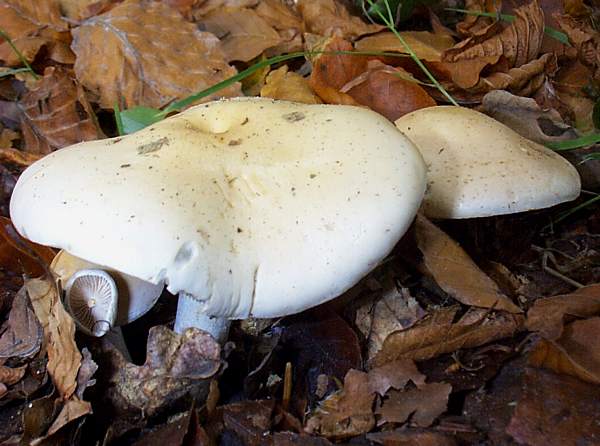
Distribution
Common and widespread in Britain and Ireland, particularly in broadleaf woodlands where it fruits usually in groups (sometimes in great numbers), this neat-looking mushroom is found also throughout most of mainland Europe, where it seems likely that oaks rather than birch and beech trees are its most common mycorrhizal partners. Poisonpie is reported to be equally common and widespread in North America.
Taxonomic history
This mushroom was described in 1787 by French mycologist Jean Baptiste Francois Pierre Bulliard, who gave it the name Agaricus crustuliniformis. (Vast numbers of gilled fungi were dumped into the Agaricus genus in the early days of fungal taxonomy; most have since been moved to other genera leaving in Agaricus a much smaller number of what are often referred to as 'true mushrooms'.)
It was another Frenchman, Lucien Quélet, who in 1872 transferred this species to its current genus, whereupon its scientific name became Hebeloma crustuliniforme.
Synonyms of Hebeloma crustuliniforme include Agaricus crustuliniformis Bull., Agaricus crustuliniformis var. minor Cooke, and Hebeloma crustuliniforme var. minor (Cooke) Massee.
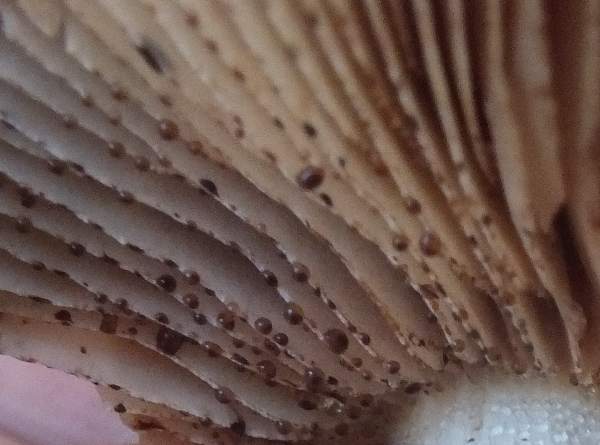
Etymology
The generic name Hebeloma comes from two Ancient Greek words: hebe- means youth, and the suffix -loma means a veil. Thus mushrooms of this genus have a veil (the partial veil that covers the gills) only in the early stages of fruitbody development - when they are youthful. We come across that suffix -loma in several other fungi genera including Entoloma, and Tricholoma. The specific epithet crustuliniforme means in the form of a thin crust of bread. Well, a nice crusty pastry topping does not make a poison pie palatable. (Without the pastry, would it be a Toxictart rather than Poisonpie?)
Toxicity
The common name Poisonpie should be enough to warn anyone against gathering these mushrooms for food. This is a toxic toadstool and it should definitely not be picked for eating.
In the picture above, characteristic watery droplets can be seen emerging from te gills of Poisonpie Hebeloma crustuliniforme. This feature is helpful in distinguishing Poisonpie from other large pale Hebeloma species such as the otherwise very similar Bitter Poisonpie Hebeloma sinapizans.
Identification guide
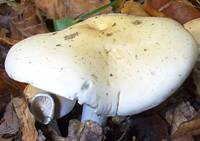 |
Cap
Pale buff to ochre, slightly darker in centre; convex, becoming broadly umbonate, caps of Hebeloma crustuliniforme are slightly greasy when wet. The margin is often wavy, sometimes lobed; 4 to 11cm across. |
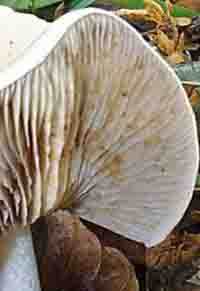 |
Gills
White turning clay-brown with white edges; when damp sometimes exuding watery droplets that dry as brown spots (see left); emarginate; crowded.
Stem
White or very pale yellow; mealy towards the apex; cylindrical; 4 to 8cm long, 1 to 2cm in diameter; sometimes slightly swollen at base. |
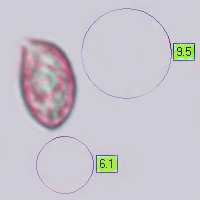 |
Spores
Almond shaped, 9-13 x 5.5-7.5μm, covered with small surface warts.
Spore print
Reddish-brown. |
Odour/taste |
Odour of radish; bitter taste. |
Habitat & Ecological role |
Mycorrhizal, under broadleaf and coniferous trees; sometimes singly but more often in scattered tufted groups of typically 2 to 5 fruitbodies. |
Season |
July to November in Britain and Ireland; continuing through to at least January in Mediterranean countries. |
Similar species |
Hebeloma sinapizans is typically rather larger with a more bulbous stem base; it favours alkaline soil, has a persistent incurved cap margin until almost fully expanded, and has gills that do not release watery droplets that leave dark brown spots on the gills. It is, despite all the above, very difficult to separate these two species in the field from macroscopic characters alone. |
Reference Sources
Fascinated by Fungi, 2nd Edition, Pat O'Reilly 2016, reprinted by Coch-y-bonddu Books in 2022.
Dictionary of the Fungi; Paul M. Kirk, Paul F. Cannon, David W. Minter and J. A. Stalpers; CABI, 2008
Taxonomic history and synonym information on these pages is drawn from many sources but in particular from the British Mycological Society's GB Checklist of Fungi.
Top of page...
Fascinated by Fungi. Back by popular demand, Pat O'Reilly's best-selling 450-page hardback book is available now. The latest second edition was republished with a sparkling new cover design in September 2022 by Coch-y-Bonddu Books. Full details and copies are available from the publisher's online bookshop...